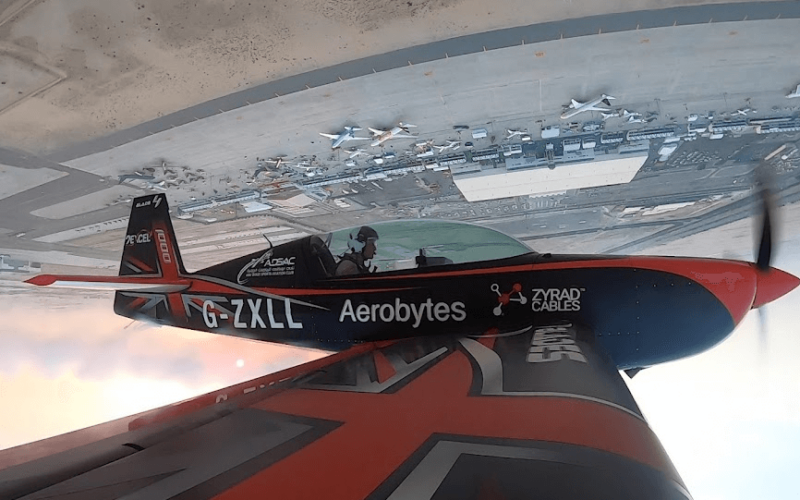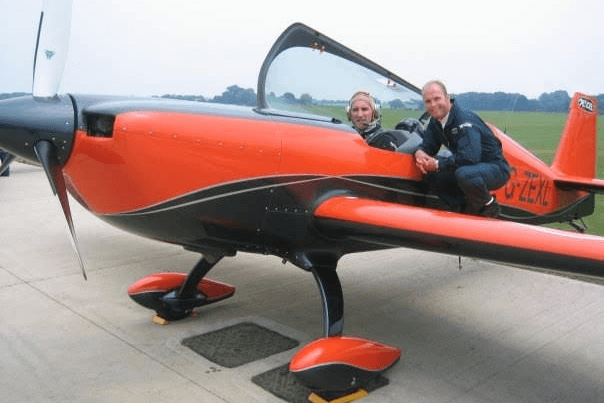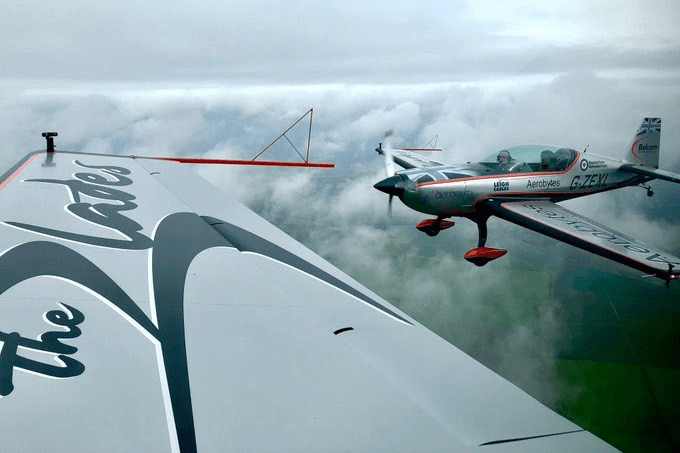Mention sports aviation and one aircraft immediately springs to mind: the Extra300. Straddling the disciplines of competition aerobatics and air racing, the Extra celebrates its 35th anniversary this year. But it still looks as modern as the day it was unveiled by German designer Walter Extra.
While several other similar types, including the Zivko Edge 540, MX Aircraft MX2 and Sukhoi Su-29, all compete on the world stage, the Extra300 has become ubiquitous, arguably defining the requirements for those which have followed. I have been lucky enough to fly several different Extras in a variety of scenarios – from basic aerobatic manoeuvres to air racing demonstrations and even mock aerial combat. The Extra handles them all with ease, which is more than can be said for a keen amateur pilot like myself.
While I can attest that it’s very easy to get things wrong without proper instruction, there are few machines which have brought as wide a smile to my face as flying the Extra. Why? It is the aeroplane’s combination of raw power and manoeuvrability. The merest touch of a fingertip on the stick gives you the sense that you’re flying a thoroughbred that is equally happy as a show pony.
Flying the Extra can also be an intense physical workout that will leave you exhausted after just 15 minutes aloft practising your aerobatic skills. The aeroplane is stressed to withstand plus and minus 10 times the force of gravity (known as G-force or simply ‘G’). That’s more than enough punishment for the average pilot, even after extensive training. And unlike flying in military jets where high G is sustained during turns, the Extra can go from flying along straight and level at 1G to 9G in the blink of an eye – and back again – just by pulling back hard and fast on the stick, and then relaxing the back pressure. And it will roll through more than 360 degrees in just a second, leaving your head spinning.
If it has a downside, I’d say that’s the tandem seating arrangement – whereby the aircraft is captained from the rear seat with the student in front. This means it can be difficult to comprehend aspects of your lessons once you’re fatigued. And the instructor relies on how their student is verbally responding from the front seat, hence repeated checks of how you’re feeling. It is easy to take on too much in the early phases of your training. It’s always better to know when to knock it off and return to base than persist and end up feeling ill, at least at first.
My first flight in an Extra was with the Blades back in the mid-2000s when the then fledgling aerobatic team began to establish themselves on the airshow and passenger experience scene. Since then, I’ve been up with a number of different training schools, practised Red Bull-style air racing with civilian flying school Ultimate High, and enjoyed a demonstration flight with the now defunct Red Bull Air Race’s own media pilot, which resulted in an impromptu aerobatics lesson in the skies above Porto in Portugal.
Another memorable hop was a short ride in a beautiful, privately-owned Extra which culminated in a display practice over a grass airfield, leaving me disorientated and wishing I was on the ground. But every time I’ve been stunned by just how great an aeroplane the Extra300 is. It’s always thrilling to strap in as you anticipate the sensations you’re about to experience.
Extra’s canny design, which was revolutionary back in 1987, created an extremely strong structure using advanced materials that created a machine with low weight, extreme agility and high performance from a 300 horsepower, six-cylinder Lycoming engine. This makes for something akin to a rocket ship.
As Red Bull-style air racing returns this year under a new guise and ownership, the Extra will again be used for training upcoming race pilots as well as demonstrations for the media. It is rightly referred to as the aerial equivalent of Formula One motor racing, with upwards of a million spectators turning up to watch at some of the global events in the past. The Extra is perfect for this kind of flying, zipping around through 25-metre-high inflatable pylons laid out as a slalom at speeds of around 250mph. This makes for a thrilling spectacle but is not for the inexperienced. Those seeking to enter must have the right experience, undertake rigorous training, and be signed off as safe by the organisers.
More accessible is competition aerobatics. Several annual events in the UK allow curious pilots to discover more about the sport and to participate in their very first aerobatic competition, under the supervision of an experienced aerobatic pilot.
Although flying the aeroplane around the sky should be second nature for aviators looking to go down this route, the sensations are quite different once the G kicks in with hard manoeuvring. My first Extra flight started with a few gentle wingovers and turns before my ex-Red Arrows instructor gradually wound up to some steeper moves and then we went into some loops.
I had been told to brace for the onset of G. Why? As we walk around or sit on the ground, we are subject to 1G, or one times the force of gravity. During a loop we’d pull about 4G so your body suddenly weighs four times its normal weight. Additionally, all the blood is forced into your legs. As the Gs increase this can lead to blackouts as blood flows out of your head. G-straining techniques such as clenching your buttocks, thighs and stomach help to keep blood in the upper part of the body longer and ward off the adverse effects.
Flying aerobatics in such a capable machine as the Extra is relatively easy. Refining them is much harder. The controls are feather light so for a loop you just need to ensure you are at the right entry speed – about 160 knots – then pull back on the stick until the G-meter registers 3.5 to 4Gs. You’re soon soaring skywards. As the aircraft’s nose rises, it’s best to look to one side along the wing to check you are level as you pass through the horizon. Next you should look above your head to see the ground reappearing. Now your eyes are back to the front (at this point you are pointing directly at the earth, which can be disconcerting the first time you do it), anticipating levelling out and easing off the back pressure on the stick as your nose returns level to the horizon. If you’ve done it well, the aircraft will have described a perfect circle in the sky. You may even feel the bumpy air as you fly back through the wash created by the propeller in the spot where you started from.
More advanced aerobatic figures require training and plenty of practice. Soon you’ll be ready for your first competition. And what better aeroplane to hire to do this than the fabulous Extra300.



